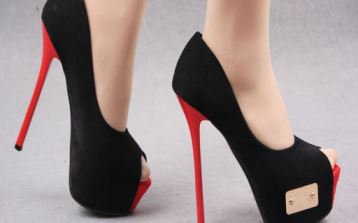High Heels

High heels have always been associated with social status, sexuality, power and beauty. All of us know by age four that Cinderella’s high-heeled glass slipper rejected her ugly sisters and fit her like a glove. Putting the reasons for this to one side, it is a fact that women love shoes that add an inch or three to their height. A recently completed study in America of eight million women between the ages of 18 and 73 concluded that:
- One in three said they liked wearing heels regularly
- One in five said they wore them to look at work or for their partner even though they hurt
- More than 80 percent said they would not consider changing shoes to improve a foot problem
Osteopathic physicians are in agreement that sustained high-heel wear causes problems – and not just to the foot. The continuous bending of your toes in unnatural angles can lead to ingrown toenails and irreversible damage to your leg tendons. Also, cramming your toes into a narrow space can cause nerve damage and bunions. Osteoarthritis of the knee and lower back pain are also possible.
The problem is with the way high heels redistribute your body weight. Nature intended our weight to be distributed evenly across our feet, with our heels taking a bit more weight than the soles. Our backs are aligned to our feet so that weight is distributed between them, without either of them compensating for the other.
But when you wear high heels, you transfer more weight onto your toes, which makes your body tilt forward, and to compensate you lean back and overarch your spine, causing an unnatural posture which is stressful on your knees, hips and lower back. This puts pressure on the nerves of your spine, doctors say, and it may lead to sciatica, a condition which causes pain and numbness as far down as your feet.
Does this all mean you have to give up your heels for good? No, say the doctors, but they recommend the following routines:
- Choose heels that are shorter than an inch and a half. Heels taller than this cause undue stress on the body.
- Make sure your heels are the right size. There should be no wriggle-room to slide the toes in and increase the pressure on them.
- Wear heels on days that require limited walking or standing. Do not make heel-wearing a daily exercise. Treat it like you would an indulgent dessert, only to be had occasionally.
- Mix heels with flats and comfortable shoes to allow your hips, back and feet to re-adjust to nature.
- Take time every day to stretch your calves and feet.
- Wear soft insoles to reduce the impact on your knees.
A sense of style is important, but so is being able to stand and walk without pain. Your feet are your base of support. If they are not happy, nothing above them will be. So take a closer look at your shoe collection and take small steps now to healthier feet.







